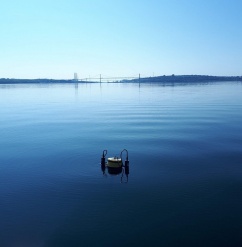Field Sampling
Weekly sampling in the Bedford Basin
Field Instrumentations
While at the sampling station, the following oceanographic instruments are deployed:
- Niskin bottles that collect water from 4 depths (1m, 5m, 10m and 60m) for laboratory analysis.
- Secchi disk: measures light penetration
- A hyperspectral freefall irradiance and radiance profiler
- A bio-optical profiler consisting of a suite of instruments:
- SUNA nitrate sensor (Satlantic)
- ACS Spectrophotometer (Wetlabs): measures light absorption and attenuation
- VSF3 Scattering meter (Wetlabs): measures scatter of light at 3 wavelengths & 3 angles
- FL3 fluorometer (Wetlabs): chlorophyll a
- pH sensor (Seabird)
- Dissolved oxygen sensor (Seabird)
- CTD (AML): Conductivity, temperature, depth/pressure
Sensor Data Processing
CEOTR鈥檚 data processing pipeline includes custom Python code for converting raw data from weekly time series sampling to NetCDF format, which includes metadata from CEOTR鈥檚 freely available software package . Processed data is made available through as well as through .
Laboratory Analysis
The water samples are analyzed for concentrations of several compounds such as carbon, nitrogen, chlorophyll a, dissolved oxygen and halogens. Also measured are ratios of nitrogen isotopes, the composition of the microbial community, genomics, and light absorption by particulates and coloured dissolved organic matter (CDOM).
CLICK HERE to view a list of samples analysed by CERC.OCEAN Chemistry Lab
Benthic Pods
In addition to the weekly time series, benthic pods were deployed inside the basin. These pods collected data close to the sediment-water interface, providing a higher temporal resolution on various processes, particularly the intrusion of offshore water into the deep part of Bedford Basin during the anoxic period in the fall. Check out the story of the original deployment here.


